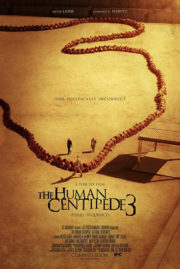Welcome to Your Nightmare: The Eternal Horror of Elm Street
“Whatever you do… don’t fall asleep.” These chilling words encapsulate the essence of ‘A Nightmare on Elm Street,’ a seminal horror classic that has haunted viewers since its 1984 release. Directed by Wes Craven, this film introduced the world to a nightmarish reality where a sinister figure with a bladed glove stalks the dreams of unsuspecting teenagers. In the deceptively quaint town of Springwood, when the sun sets and the eyelids grow heavy, terror becomes inescapable. This spoiler-free synopsis is just the tip of the iceberg—beneath lies an intricate weave of fears both primal and profound.
The Dreamlike Dread: Atmosphere and Tone
The film’s success in constructing a palpable atmosphere of horror is indisputable. Craven masterfully uses suspense and an omnipresent sense of foreboding to permeate the viewers’ psyche. As we tread the line between wakefulness and dream, ‘A Nightmare on Elm Street’ employs a haunting ambiguity that forces us to question reality. The director’s approach to building tension is methodical—it crescendos, playing on primal fears of the dark and the unknown, then erupts into moments of visceral alarm, only to retreat into silence, leaving us anxiously awaiting the next encounter with Freddy Krueger, the stuff of nightmares incarnate.
A Visual Descent into Madness: Cinematography and Sounds of Fear
The cinematography in ‘A Nightmare on Elm Street’ is as inventive as it is disturbing. With its clever use of lighting that oscillates between stark contrasts and murky shadows, the film cultivates a visual style that brings our deepest fears to the forefront. The color palette is a character in itself, reflective of the film’s mood and tone, with a particular emphasis on the eerie glow of nocturnal scenes. Camera angles are often jarring, adding disorientation to the mix of terror, while special effects are ingeniously pragmatic, straddling the line between grotesque and believably nightmarish.
Meanwhile, the soundtrack and sound effects are critical in completing this horror masterpiece. From the dissonant chords to the sinister lullaby that heralds doom, the auditory elements amplify the dread. Silence is wielded with precision, allowing the creaks and sudden screams to punctuate the tension in a symphony of scares.
The Human Element: Performances That Petrify
The film boasts a collection of memorable performances that forge a formidable ensemble. Heather Langenkamp’s portrayal of the tenacious Nancy Thompson stands as an archetype for the ‘final girl’ in slasher cinema. Her honest and evocative performance grounds the supernatural hysteria in relatable human emotion. A young Johnny Depp, in his film debut, contributes palpably to the overall terror with his portrayal of Glen Lantz, Nancy’s boyfriend. However, it is Robert Englund as Freddy Krueger, with his ghoulish charisma, who steals the show and creates an iconic horror villain recognized across the globe.
Confronting the Specter: Themes and Impact
‘A Nightmare on Elm Street’ is not just an exercise in fear—it’s a canvas for deeper commentary. The film taps into thematic concerns of parental secrets, mistrust between generations, and the loss of innocence. It’s a psychological and supernatural dance that keeps us guessing even as it sends shivers down our spines. Through Krueger, Craven challenges us to confront the skeletons hiding within our collective closets, making the film as thought-provoking as it is horrifying.
Its appeal transcends the traditional horror genre, offering thrills to aficionados and newbies alike. While it may not rely on a significant amount of gore, the movie achieves an unnerving effect through its unsettling concept and expertly executed jump scares—methods that are still imitated but rarely matched in effectiveness.
The Verdict: A Dream Worth Revisiting?
As a pillar of the horror genre, ‘A Nightmare on Elm Street’ stands tall. Years later, it retains its power to terrify and provoke. Whether it’s the innovation of its villain, the solidarity of its scares, or the prescience of its themes, it’s a must-see for horror enthusiasts and cinephiles. Casual viewers should be wary, though the film’s less explicit approach to horror compared to modern standards could make it more palatable. With a warning about its intense scenes and nightmare fuel, ‘A Nightmare on Elm Street’ still claims a proud place in the horror hall of fame, offering an experience that is as enthralling as it is chilling.
In the grand tapestry of horror cinema, from the slasher heyday of the ’80s to today’s genre-bending experiments, Wes Craven’s masterwork continues to resonate. It dares us to dream, to sleep, and to inhabit the world of our subconscious fears. For those brave enough to return to Elm Street, Freddy Krueger awaits, razor-sharp and wicked as ever, in a film that’s both a product of its time and a timeless entry in the annals of horror.




